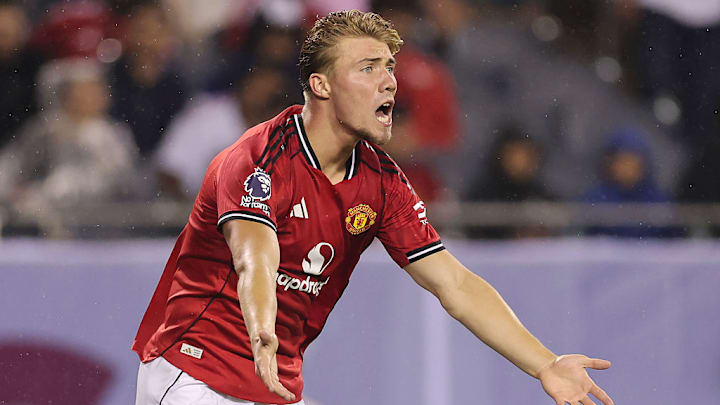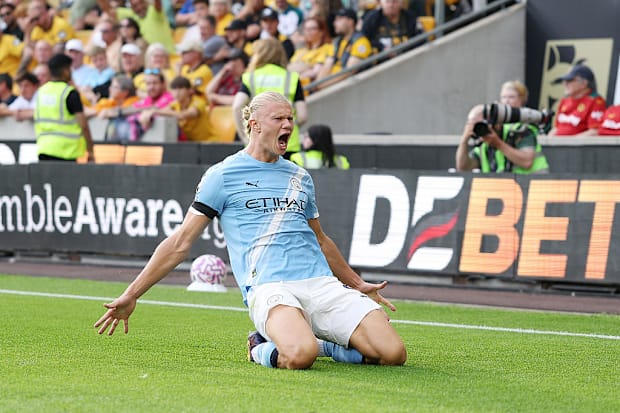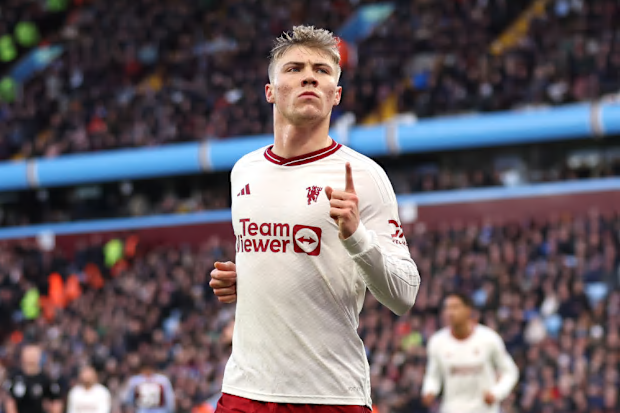Rasmus Hojlund's Potential Man Utd Departure: A Painful Yet Inevitable Decision That Breaks Hearts All Around

Rasmus Højlund attempted to resist the inevitable. The Danish forward began this summer by openly expressing his commitment to staying at Manchester United, unwilling to abandon a dream move that materialized just months after turning 20 in 2023.
However, by August, the expensive acquisition of Benjamin Šeško from RB Leipzig and the likelihood of significantly reduced playing time—particularly without European competitions adding fixtures—prompted Højlund to reconsider his position.
Following the collapse of potential negotiations with AC Milan, Napoli's strong pursuit—including a possible loan deal with a mandatory purchase clause that provides the security the player seeks—appears increasingly probable to result in a definitive separation between Højlund and Manchester United.
It's deeply unfortunate that matters have reached this point. Yet there seems to be no path to reconciliation. Šeško has become the primary option, leaving Højlund to compete for limited opportunities that may never materialize or seek alternatives elsewhere.
Højlund has demonstrated considerable potential, and likely possesses significant room for growth once he discovers the appropriate environment, but conditions have seldom favored him at United.
Right from the beginning, an enormous £72 million ($96.6 million) transfer fee created immense expectations. Manchester City invested less for Erling Haaland the previous year. However, while Haaland represented a reliable investment—two years more experienced and remarkably productive throughout an extended stint at Borussia Dortmund—Højlund remained largely unfamiliar to most observers. He had accumulated merely 87 senior appearances and netted 27 goals.

Initial parallels were established with Haaland as well, mainly due to their common Scandinavian origins and comparable physical builds. Once Højlund began playing, though even that was postponed by a troublesome back problem he carried upon arrival, expectations mounted immediately. Adapting gradually within a squad that was failing to match the Premier League's elite was never going to be straightforward, and he received minimal tolerance from supporters and observers.
It became evident early that Højlund performed better in the Champions League than domestically. He found the net five times in his initial four European outings, including double strikes against Galatasaray and former team Copenhagen—the fact that all three Champions League matches where he scored resulted in losses revealed issues elsewhere in the squad. Conversely, it required 15 Premier League fixtures to register his first goal. Nevertheless, that breakthrough sparked a sequence of seven league strikes in six consecutive matches. United collected 16 points from 18 available during that period.
However, that streak concluded abruptly when Højlund sustained a hamstring problem. Upon his comeback, United's progress had stalled, resulting in four matches without victory or goals from him. When he scored once more, the team succeeded every time, winning three of the final 10 games in the 2023–24 season.

In total, as a 20/21-year-old, he managed 10 Premier League strikes and 16 across all tournaments. It represented a respectable beginning in a squad that concluded eighth in the league standings.
Yet once more, injury struck at the most inopportune moment, a hamstring issue during pre-season preparations for 2024–25. Højlund was absent for the campaign's opening month and struggled to regain match fitness and form in a team failing to generate sufficient scoring opportunities. Conditions didn't improve with a managerial change, as Ruben Amorim introduced his completely new tactical approach requiring adaptation time.
Højlund found no respite either, with Marcus Rashford dramatically losing favor and departing in January, while 2024 signing Joshua Zirkzee battled his own adaptation difficulties.
With every match, Højlund's self-assurance appeared to diminish, yet Amorim had limited alternatives but to continue selecting him. He concluded the campaign with merely four Premier League goals, having scored six in half as many Europa League matches—once again, European competition seemed more suitable for him.
During successful periods, Højlund demonstrated himself as a capable striker. In different circumstances, this partnership could have flourished significantly. There were glimpses of brilliance, but the timing proved entirely wrong for someone with his undeveloped talent to excel in a club experiencing such instability.
At just 22 years old with substantial potential to become a future star, Højlund merits an opportunity to grow and develop away from the harsh scrutiny he's faced over the past two seasons.
